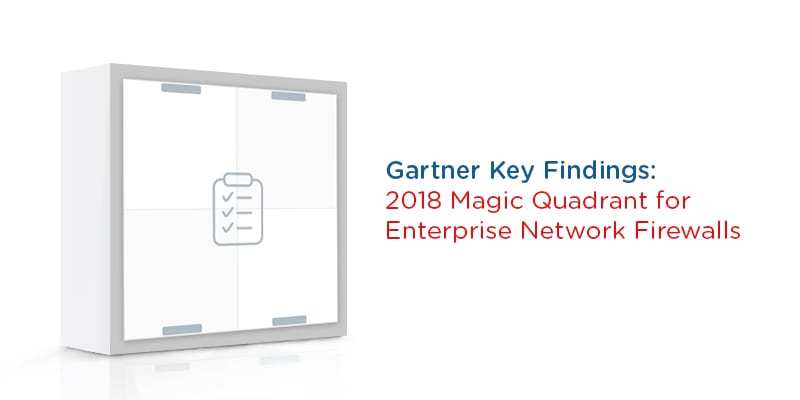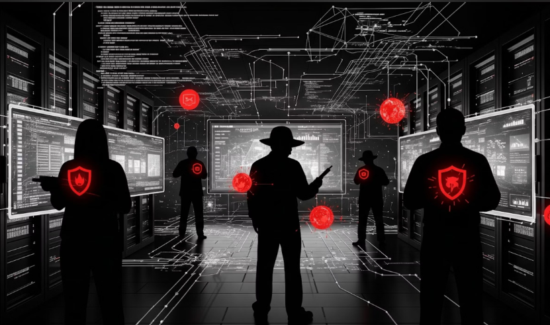Key Findings: The 2018 Magic Quadrant for Enterprise Network Firewalls


It’s that time of year again: technology research and analysis firm Gartner, Inc. has released the annual iteration of their Magic Quadrant (MQ) Report for Enterprise Network Firewalls for 2018.
For the uninitiated, in this report, Gartner evaluates the strengths and weaknesses of the 16 Enterprise Network Firewalls vendors it considers the most significant in the market based on distinct service and market share criteria. The report then provides readers with a graph—the so-called Magic Quadrant—plotting the vendors based on the completeness of, and their ability to execute on, their security vision. The four categories of the Quadrant are labeled Leaders, Visionaries, Challengers, or Niche Players.
For the 2018 report, the 16 vendors selected to the Enterprise Network Firewalls Magic Quadrant are AhnLab, Barracuda, Check Point Software Technologies, Cisco, Forcepoint, Fortinet, Hillstone, Huawei, Juniper Networks, New H3C Group, Palo Alto Networks, Sangfor, SonicWall, Sophos, Stormshield, and WatchGuard.
Gartner has released at least 6 iterations of the MQ for Enterprise Network Firewalls. In 2018, Gartner’s opinions of this category were framed as a refutation of the supposed death of the firewall and as an absorption of next-generation firewalls for enterprises. Gartner also examined virtualized versions of enterprise network firewalls, with such versions exceeding 15% of market revenue by 2023 according to their predictions.
At Solutions Review, we read the 2018 Magic Quadrant Report for Enterprise Network Firewalls. We pulled a few of the key findings. Here they are:
How Gartner Defines Enterprise Networks Firewalls
Gartner’s definition of Enterprise Network Firewalls remains remarkably consistent with the 2017 definition: firewall technologies are “composed primarily of purpose-built appliances for securing enterprise corporate networks.”
For inclusion in the Magic Quadrant, vendors must be able to support single enterprise firewall deployments and more complex deployments. All enterprise network firewalls should offer granular applications, user controls, and reporting consoles.
In its definition, Gartner outright states that “next-generation” firewalls no longer exist; enterprise network firewalls have essentially subsumed it. What has changed from last year is enterprise firewall vendors offering better policy enforcement and stronger security against new threats via tools like sandboxing.
Firewalls must also distinguish themselves from unified threat management solutions, such as by offering more granular blocking capabilities. They must also offer automation and encryption termination capabilities.
2018: A Year of Consistency
Gartner readjusts its evaluation criteria, often in response to market changes, each year. Therefore, sometimes vendors who appeared in the MQ one year may not return for the next one.
Yet this year, no vendors were added to the 2018 Magic Quadrant Report for Enterprise Network Firewalls. No vendors were dropped. It was a year of consistency in an admittedly mature market.
The continuity of vendors adds another connection to the UTM MQ, which also demonstrated remarkable stability. Indeed, many of the vendors from that MQ report appear here as well, indicating just how blurry the line between the two categories can be.
Firewalls Yet Live
Gartner is holding fast to the idea of the firewall and its necessity for the enterprise cybersecurity platform, even as the digital perimeter expands and evolves. The argument here is transitions in technology still take time regardless of the enthusiasm with which they are embraced. Eventually, firewall market growth will slow, but not for some time—Gartner predicts it might be as much as half a decade. In fact, the firewall market might grow before cloud adoption takes its toll.
A Market of Niche Players
Of the 16 vendors included in the 2018 Magic Quadrant Report for Enterprise Network Firewalls, the clear majority—10—were placed in the Niche Players quadrant. According to Gartner, Niche Players “are smaller vendors of enterprise firewalls, makers of multifunction firewalls for SMBs or branch-office-only product makers that are attempting to break into the enterprise market.”
If this is true, Gartner’s argument of the Enterprise Network Firewalls market being viable for longer than expected carries greater weight. If vendors are trying to break into the market, there must still be interest and investment in it. Certainly, it is far from dead.
The 10 vendors in the Niche Players Quadrant are Sophos, Juniper Networks, Barracuda, Sangfor, Hillstone, WatchGuard, SonicWall, AhnLab, Stormshield, and New H3C Group.
4 Leaders in Enterprise Network Firewalls
Gartner considers Leaders as vendors who “lead the market in offering new features that protect customers from emerging threats, provide expert capability rather than treat the firewall as a commodity and have a good track record of avoiding vulnerabilities in their security products.”
For 2018, the 4 Leaders are Palo Alto Networks, Fortinet, Cisco, Check Point Software Technologies.
Cisco receives praise for its product execution, incorporating a centralized threat intelligence team into its research. Check Point is lauded for its strong capabilities such as multi-domain security management. Fortinet’s capabilities also received praise for its capabilities such as secure email and web application firewall and its continued enhancements. Palo Alto was singled out in part for its improvements to its support of decrypted concurrent TLS connections.



















